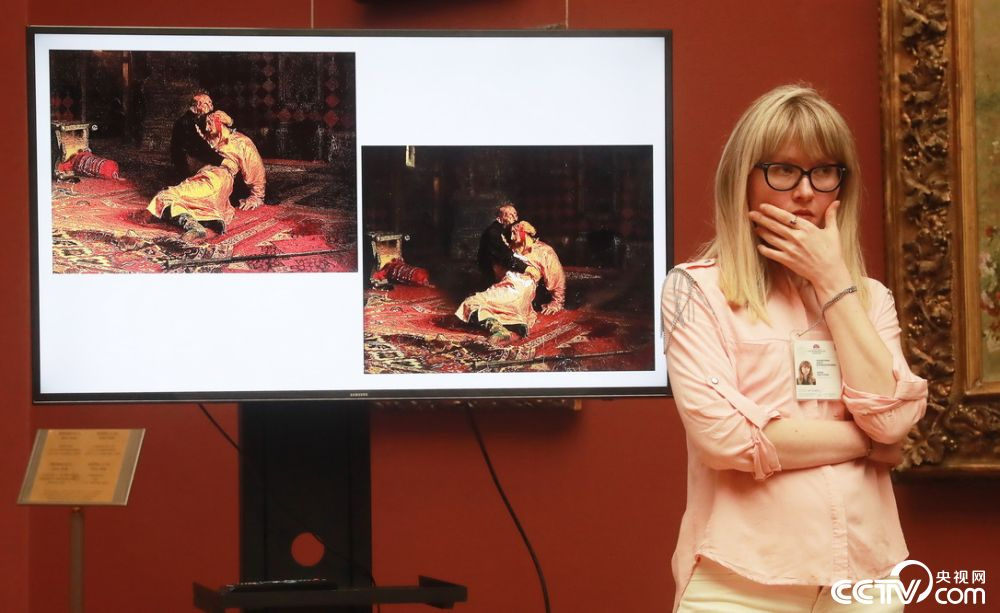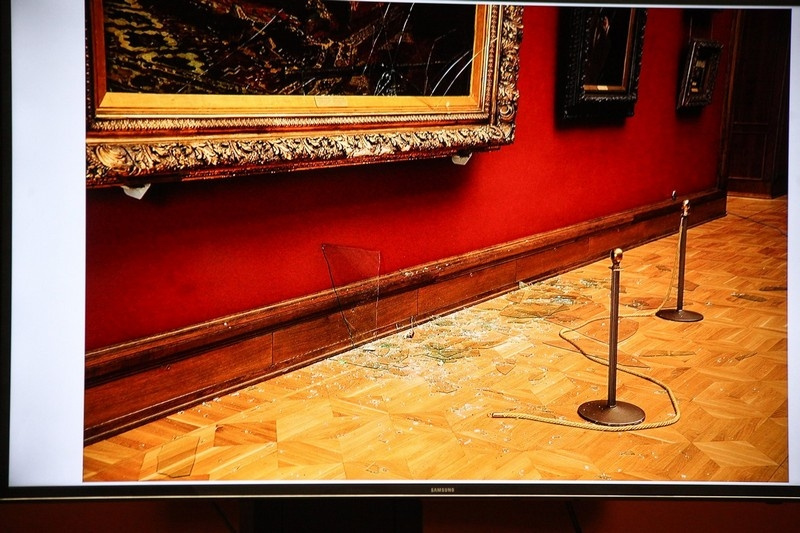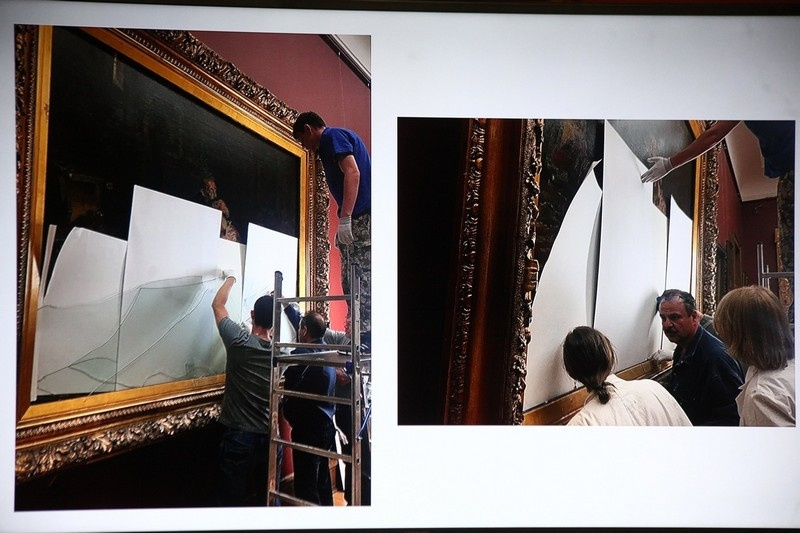The cost of the first stage of the restoration of the damaged painting is up to ten million rubles ($160,000). The Tretyakov Gallery Director Zelfira Tregulova announced the special protection for the painting after restoration. It will be displayed in a special protective glass case.

"Serious damage was done to the painting. The canvas was pierced in three places in the central part of the work which depicts the figure of the tsarevich (the tsar’s son)." The frame was also badly damaged, the gallery said, but "by a happy coincidence" the most precious elements of the painting — the depiction of the faces and hands of the tsar and his son — were not damaged.

The canvas, "Ivan the Terrible and His Son Ivan on November 16, 1581," was painted by renowned Russian realist Ilya Repin and portrays a grief-stricken tsar holding his own son in his arms after dealing him a mortal blow, a historical incident whose veracity some Russian nationalists dispute.
Inspired by the assassination of Tsar Alexander II in 1881, Repin completed the work in 1885 and it was purchased by the Moscow merchant Pavel Tretyakov for display in his namesake gallery. But the painting offended Tsar Alexander III and it was temporarily banned from public display.
For a long time, Russian nationalists who objected to the painting being on public view and disputed its veracity, demanded the gallery to remove the artwork from the display, something the Tretyakov has refused to do.
Left: Ilya Repin. Self-portrait, 1878.

In a video released by the interior ministry, the unnamed suspect appears to confess, saying he went to see the painting before drinking vodka. "I wanted to leave, but then dropped into the (gallery's) buffet and drank 100 grams of vodka. I don’t drink vodka and became overwhelmed by something." - said man.
Some Russian media cited him as saying he had attacked the painting because he thought its depiction of Russian history was inaccurate.

This painting is damaged not for the first time. Experts are surprised: the wounds are three again, as during the first attempt of the accident that happened one hundred and five years ago. The canvas was attacked in 1913 by a mentally disturbed man who slashed it with a knife three times, shouting "enough death, enough blood!" Gregory Khruslov, the curator responsible for the painting, threw himself under a train when he heard about it.
Repin was still alive at the time and personally restored it.
Left: The painting after the 1913 knife attack CREDIT: WIKIPEDIA COMMONS
The experts believe Ivan the Terrible "was lucky". A special canvas, which is unofficially called "Repinsky" among restorers, allowed "to withstand the impact". For his canvases, the artist chose strong and coarse canvases in conjunction with new technologies that would patch a hole without losses.
"The most important thing is that there is no loss of the paint layer in the picture," says Alexander Popov, the administrative director for the scientific research of the independent experts association named after Tretyakov — If the paint fell off and the restorers had to restore the area of painting, it would be considered an irreplaceable loss".





















